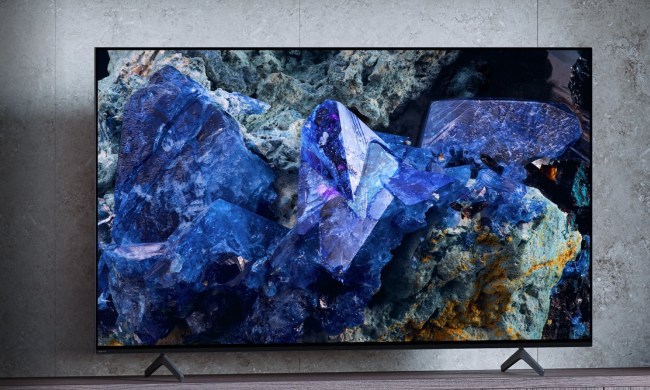If you’ve been impressed by the incredible picture quality LG’s OLED TVs produce only to be frustrated by the curved screen that comes with it, then you’ll be excited to learn that LG has just announced its first flat 4K OLED TV will hit store shelves this September. Not only that, but the TV will be the first fully HDR-compliant OLED TV, capable of displaying specialized high-dynamic-range content from both streaming sources and connected components.
The new flat-screen OLED TVs filling out the EF9500 series include the 55-inch 55EF9500 and the 65-inch 65EF9500. Pricing and features for the new line are almost identical to the curved EF9600 series — the 55-inch model will run $5,500 while the 65-inch model will go for $7,000 — but there is one notable exception: The EF9500 series will be the only LG OLED able to take full advantage of HDR-infused content from Ultra HD Blu-ray discs and players, expected later this year. While the EF9600 series will get a firmware update that allows it to process HDR content from streaming services like Netflix, Amazon and Vudu, the update doesn’t cover the TV’s HDMI ports. While this isn’t a serious hindrance for the curved OLEDs — Ultra Blu-ray discs will still look spectacular — it is a particular advantage only the flat-screened OLED TVs will enjoy.
For those not familiar, the idea behind HDR is that it can provide a higher level of contrast between light and dark images on the screen to create a much more realistic image. HDR makes bright highlights brighter, adding realism to the glint of sunlight reflecting off a lake, or the intensity of the moon and stars shining against a dark night sky. In our experience, the effect is impressive. In fact, many in the industry believe HDR represents a significantly bigger leap in picture quality than UHD’s higher resolution.
LG claims its OLED TVs are particularly well-suited for HDR since the TV technology is capable of perfect black levels; and we’re inclined to agree. The deeper blacks OLED TVs are able to achieve without introducing so-called “halos” of light around bright objects make for an especially stunning television. Though impressive advances in LED/LCD TV technology have been made in recent years, side-by-side comparisons see the OLED winning out every time.
One might be disappointed to learn the price for the flat OLED TVs doesn’t come in under that of their curved counterparts, especially given that flat LED TVs usually cost less than curved LED options. However, it could be argued that making OLED TVs is still expensive — LG is the only name in the game right now — and the expense for production is about the same. It is also worth pointing out that LG’s current 55-inch 1080p OLED now sells for $2,500 or less, while the company’s first-gen OLED sold for $15,000 — a 75 percent decrease in price over just two years.
We anticipate LG will be showing off the EF9500 next week at IFA 2015 in Berlin, and Digital Trends will be there first hand to show it to you.



